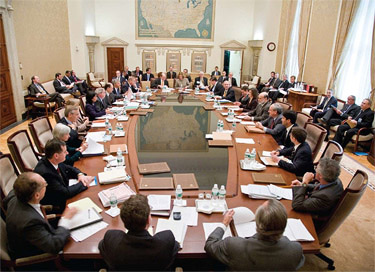Esther L. George Is The Lone Hero Within the U.S. Federal Reserve
The recent conclave of the Fed’s FOMC (Federal Open Market Committee) that met and rendered a decision has sent the Dow Jones index soaring to record levels. The Fed, under the chairmanship of Ben Bernanke, is continuing its asset buying program, calibrated at $85 billion per month, as a monetary stimulus to goose and prop up the American economy, still on life support five years after the implosion of Lehman Brothers, previous claims of “green shoots” and economic recovery notwithstanding.
Wall Street is obviously delighted. The claim that the expansion of the Fed’s balance sheet by $2.5 trillion since 2008 is not inflationary is untrue. Inflation there has been, but it is primarily confined to the equity markets, where a new asset bubble is being cultivated by Ben Bernanke and company, to the pleasure of Wall Street, which scored big through the FOMC decision on maintaining the $85 billion per month asset buying program.
The FOMC’s vote was almost unanimous in favor of continuing the money printing frenzy at the Fed-but not quite. There was one lone dissenter who voted against the continuation of the asset buying program; Esther L. George, President of the Kansas City Federal Reserve Bank. According to the Fed’s official release, “Voting against the action was Esther L. George, who was concerned that the continued high level of monetary accommodation increased the risks of future economic and financial imbalances and, over time, could cause an increase in long-term inflation expectations.”
It would appear that Ms. George is the sole rational member of the FOMC, with the ability to look beyond the horizon and recognize that the massive economic and financial imbalances being created by the Fed spell catastrophe in the future. Could that be the authentic reason why Larry Summers withdrew his name from consideration as the replacement for soon-to-retire Fed Chairman Bernanke?
If Hillary Clinton runs for President of the United States in 2016, see the video about the book that warned back in 2008 what a second Clinton presidency would mean for the USA:
Hillary Clinton Nude
Hillary Clinton Nude
HILLARY CLINTON NUDE

WALL STREET KILLS--A CHILLING NOVEL ABOUT WALL STREET GREED GONE MAD
To view the official trailer YouTube video for “Wall Street Kills,” click image below:

